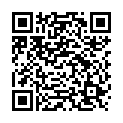|
|
|
| Module code: MAB-3.1 |
|
4V (4 hours per week) |
|
5 |
| Semester: 3 |
| Mandatory course: yes |
Language of instruction:
German |
Assessment:
Written examination
[updated 12.09.2004]
|
MAB-3.1 Mechanical and Process Engineering, Bachelor, ASPO 01.10.2004
, semester 3, mandatory course
|
60 class hours (= 45 clock hours) over a 15-week period.
The total student study time is 150 hours (equivalent to 5 ECTS credits).
There are therefore 105 hours available for class preparation and follow-up work and exam preparation.
|
Recommended prerequisites (modules):
None.
|
Recommended as prerequisite for:
|
Module coordinator:
Prof. Dr.-Ing. Helge Frick |
Lecturer: Prof. Dr.-Ing. Helge Frick
[updated 18.06.2004]
|
Learning outcomes:
Students will be taught the basics of problem-oriented programming languages in conjunction with an introduction to numerical mathematics. Students will learn programming techniques using Visual Basic for Applications (VBA) in combination with Excel so that they are in a position to transform text-based problems into small programs that will run on a PC and, where possible, display the results graphically.
[updated 12.09.2004]
|
Module content:
The lectures provide a basic understanding of how to use VBA and are structured as follows:
1. Introduction (fundamentals of programming, significance of VBA in combination with Excel)
2. Creating and editing macros (working with the integrated development environment IDE)
3. Fundamental program elements (from the idea to the program, general program structures, working with variables, working with constants, assignment statements, intrinsic and derived mathematical functions)
4. Simple input/output dialogues
5. Control structures (loops, branching, nesting, structograms and program structure diagrams)
6. Arrays
7. Procedures and functions
8. Application programming with UserForms
9. Introduction to numerical mathematics (linear and non-linear systems of equations)
[updated 12.09.2004]
|
Teaching methods/Media:
Lecture notes
[updated 12.09.2004]
|
Recommended or required reading:
Excel 2000 – Automatisierung, Programmierung, Herdt-Verlag
KOFLER M., Excel 2000 programmieren, Anwendungen erstellen mit Visual Basic für Applikationen, Addison-Wesley-Verlag
[updated 12.09.2004]
|


